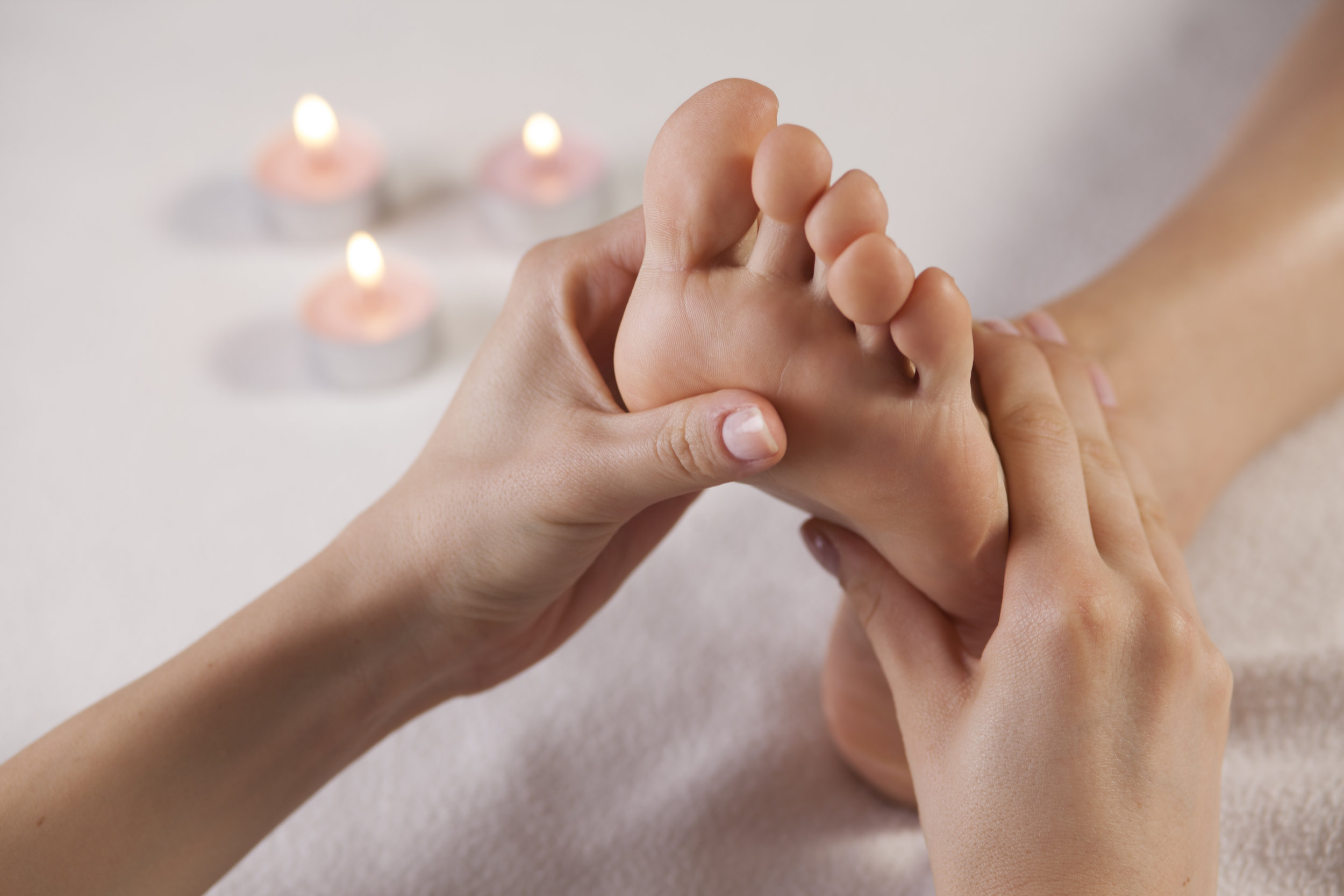Reflexology Treatment for Fibromyalgia – Causes, Treatments and Pressure Points
What is fibromyalgia?
Fibromyalgia is diagnosed by chronic, widespread pain and tenderness in the body. It is difficult to diagnose fibromyalgia as the symptoms coincide with normal fatigue and body ache. People with fibromyalgia normally display symptoms such as:
- Trouble sleeping
- Morning stiffness
- Headaches
- Painful menstrual periods
- Tingling in hands and feet
- Problems with thinking and memory also known as fibro fog.
What Causes Fibromyalgia?
Between 80 and 90 percent of people diagnosed with fibromyalgia are women. However, men and children can also have the disorder. However, Fibromyalgia is most common in middle aged people.
People with certain other diseases may be more likely to have fibromyalgia. These diseases include:
- Rheumatoid arthritis
- Ankylosing spondylitis (spinal arthritis).
- Stressful or traumatic events, such as car accidents
- Repetitive injuries
- Genetic conditions
Reflexology for Fibromyalgia
It is always advisable to consult a trained reflexologist for best results. An expert practitioner makes an intelligent assessment of all your individual complaints and symptoms and begins the therapy accordingly.
In reflexology, the top half of your foot represents the top half of your body and the bottom half of your foot represents the bottom half of your body. The left and right sides of your body are represented by your left and right feet. Consequently, there is a reflex point for every fibromyalgia symptom you may be experiencing.
Using reflexology to treat fibromyalgia is easier if you understand how your body works and why treating certain organs and glands helps you achieve relief.
- Body ache
By discussion the painful areas in your body with your reflexologist, he or she can focuses on the pressure points correlating with the affected area and work on those nerves to relive the painful symptoms of fibromyalgia
- Fatigue
One of the main symptoms of fibromyalgia is fatigue. Treat symptoms of fatigue and low energy levels by stimulating the reflex points of the adrenal glands and the pancreas. Exhaustion can be the result of low blood-sugar levels, and since the pancreas helps regulate blood-sugar levels, working the pancreas reflex points several times a day may help you get rid of this condition. Working the adrenal gland reflex points may also help you by improving the production of adrenaline, which increases energy levels.
- Lack of Concentration
Your reflexologist can remove the lack of concentration by working on your brain reflexes. These are located on the tips of your first three toes on each foot. Stimulating the brain reflexes will help you with the lack of concentration sometimes associated with fibromyalgia.
- Morning Stiffness
Fibromyalgia patients often feel stiffness all over the body due to soreness of muscles. By showing the areas of stiffness just like the body ache, your reflexologist can apply pressure into the arch area of each foot to relieve stiffness.
- Irritable Bowel Syndrome
People with fibromyalgia often complain of IBS, mainly because their body becomes susceptible to everything, so it affects the bowel movement as well. By putting pressure on the specific areas of the foot and/or hand, the reflexologist ensure to send the right signals to the bowels which in return would subside the IBS. A person will need continued treatment in order to make sure that it subsides.
Vitamin D and Fibromyalgia
People complaining of severe pain from fibromyalgia are often prescribed vitamin D supplements to balance the low levels of the vitamin D in blood. Vitamin D levels should be monitored in fibromyalgia patients, especially in the winter when there is a risk of lower levels of vitamin D due to less sun exposure.
Reflexology and Fibromyalgia
Reflexology is an effective holistic therapy for patients of fibromyalgia. Once you undergo a reflexology session, you may feel a little uneasy for the first 24 hours, but this usually reduces, as you feel completely rejuvenated. After each session, feedback is important to prepare for a follow up session.
Unlike prescribed drugs, reflexology doesn’t have the incumbent side-effects such as nausea, dizziness and lethargy. During your reflexology session, you’ll sit in a relaxing position. You’ll remove your shoes and socks and then reflexologist works on one foot and then on another, stimulating key areas of ailments. A reflexologist sole purpose is to rejuvenate and restore the body’s natural healing abilities.


